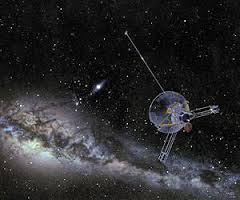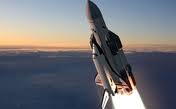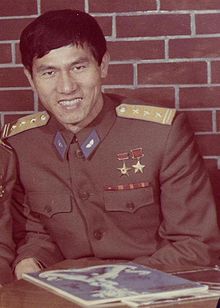



- Home1
- Solar System
- Universe
- Mercury
- Earth
- Mars
- Jupiter
- Saturn
- Uranus
- Neptune
- Venus
- Pluto
- Gravity
- Force
- Acceleration
- Radiation
- Dark Energy & Dark Matters
- Laws of Universe
- Black Hole
- Intern Article / Paper Publication
- Galaxy
- guestbook
- chatroom
- Blogger
- Membership

SPACE HERO'S

Ellen Lauri Ochoa
First Hipnotic in space
( Born May 10, 1958) is a former astronaut and current Director of the Johnson Space Center.Ochoa became director of the center upon retirement of the previous director, Michael Coats, on December 31, 2012.
Ellen Ochoa was born in Los Angeles, California, but considers La Mesa, California to be her hometown. She always had a love for science, which was also her favorite subject in school. She graduated from Grossmont High School in El Cajon in 1975. Ellen received a bachelor of science degree in physics from San Diego State University in 1980 and a master of science degree and doctorate in electrical engineering from Stanford University in 1981 and 1985,
Ochoa became the first Hispanic woman in the world to go to space when she served on a nine-day mission aboard the shuttle Discovery in 1993. The astronauts were studying the Earth's ozone layer. In her honor, Pasco School District # 1 in Pasco, Washington, and Ellen Ochoa Elementary School in Cudahy, CA had named their newest schools after her.
Ochoa was selected by NASA in January 1990 and became an astronaut in July 1991. Her technical assignments in the Astronaut Office includes serving as the crew representative for flight software, computer hardware and robotics.
Assistant for Space Station to the Chief of the Astronaut Office, lead spacecraft communicator (CAPCOM) in Mission Control, and as acting as Deputy Chief of the Astronaut Office. A veteran of four space flights, Ochoa has logged nearly 1,000 hours in space. She was a mission specialist on STS-56 (1993), was payload commander on STS-66, and was mission specialist and flight engineer on STS-96 and STS-110 (2002). Ochoa was in Mission Control during the Space Shuttle Columbia disaster and was one of the first personnel informed of television coverage showing Columbia's disintegration

Phạm Tuân
First Vietnamese and asian in space .
(born February 14, 1947) is a retired Vietnam Air Force aviator. He became the first Vietnamese citizen and the first Asian (outside Russia) in space when he flew aboard the Soyuz 37 mission as an Intercosmos Research Cosmonaut.[1][2] He was awarded the title Hero of the Soviet Union .Pham Tuan was born in Quốc Tuấn, Thai Binh province in northern Vietnam. He joined the VPAF, or Vietnam People's Air Force (North Vietnamese Air Force) in 1965, was later commissioned as a combat officer. He flew interceptor missions in a MiG-21 jet fighter against United States aircraft during the Vietnam War .
Tuan reached the rank of lieutenant colonel in the VPAF before eventually training to be a research cosmonaut in the joint USSR-Vietnamese Space program. On April 1, 1979, he was selected as a member of the sixth international crew for the Intercosmos program. His backup was Bùi Thanh Liêm. Tuan, along with Soviet cosmonaut Viktor Gorbatko, was launched from Baikonur Cosmodrome on July 23, 1980, on board Soyuz 37 en route to the Salyut 6 station.
During his time in orbit, Tuan performed experiments on the melting of mineral samples in microgravity. He also carried out plant experiments on azolla and photographed Vietnam from orbit for mapping purposes. Tuan was in space for 7 days, 20 hours, and 42 minutes. He completed 142 orbits, and was returned to earth on July 31, 1980 .
During his time in orbit, Tuan performed experiments on the melting of mineral samples in microgravity. He also carried out plant experiments on azolla and photographed Vietnam from orbit for mapping purposes. Tuan was in space for 7 days, 20 hours, and 42 minutes. He completed 142 orbits, and was returned to earth on July 31, 1980

Philippe Perrin
First French citizen in space
(born January 6, 1963) is a French test pilot and former CNES and European Space Agency astronaut.
In July 1996, CNES announced his selection as an astronaut candidate and assigned him to attend NASA’s Astronaut Candidate Training in Houston, Texas.
Perrin reported to the Johnson Space Center in August 1996. Having completed two years of training and evaluation, he qualified for flight assignments as a mission specialist. Perrin was initially assigned technical duties in the Astronaut Office Spacecraft Systems/Operations Branch.
He served as a mission specialist on the STS-111 mission in 2002 and logged over 332 hours in space, including 19 hours and 31 minutes in three spacewalks, performed with Franklin Chang-Diaz.
After his flight, Perrin returned to France to work as support astronaut on the Automated Transfer Vehicle program. December 2002 he was transferred from CNES to the European Space Agency's astronaut corps.[1]
He did not fly in space with ESA and left the European Astronaut Corps in 2004. He is currently working as a test pilot for Airbus.
STS-111 Endeavour (5–19 June 2002). The STS-111 mission delivered a new ISS resident crew and a Canadian-built mobile base for the orbiting outpost’s robotic arm. The crew also performed late-notice repair of the station’s robot arm by replacing one of the arm’s joints. It was the second Space Shuttle mission dedicated to delivering research equipment to the space platform. Perrin performed three EVAs (spacewalks) with Franklin Chang-Diaz. STS-111 also brought home the Expedition 4 crew from their 6-1/2 month stay aboard the station. Mission duration was 13 days, 20 hours and 35 minutes. Unacceptable weather conditions in Florida necessitated a landing at Edwards Air Force Base, California.

Wubbo Johannes Ockels
First Dutch Citizen in space
( March 28, 1946 – May 18, 2014) was a Dutch physicist and an astronaut of the European Space Agency (ESA). In 1985 he participated in a flight on a space shuttle (STS-61-A), making him the first Dutch citizen in space. After his astronaut career, Ockels was professor of Aerospace for Sustainable Engineering and Technology at the Delft University of Technology.
Ockels was born in Almelo but considered Groningen to be his hometown. He obtained his MSc degree in physics and mathematics in 1973 and subsequently a PhD degree in the same subjects in 1978 from the University of Groningen. His thesis was based on experimental work at the Nuclear-physics Accelerator Institute (KVI) in Groningen.
In 1978, he was selected by the European Space Agency (ESA) as one of three European payload specialists to train for the Spacelab 1 mission. In May 1980, under the terms of an agreement between ESA and NASA, Ockels and Swiss astronaut Claude Nicollier were selected to begin basic astronaut training for mission specialist together with the NASA astronaut candidates at NASA's Johnson Space Center, Houston, Texas. Ockels successfully completed this training in August 1981. He rejoined the Spacelab 1 crew for training as a back-up payload specialist to operate experiments aboard Spacelab 1. This mission of a reusable, scientific research facility built by the European Space Agency (ESA) took place aboard the Space Shuttle in November 1983. Spacelab 1 was a joint NASA/ESA mission. He was the first Dutch citizen astronaut, not the first Dutch-born astronaut, as he is preceded by the naturalized American Lodewijk van den Berg, who flew on STS-51-B. Having served his role as back-up payload specialist for German astronaut Ulf Merbold, he took his place in Mission Control in Houston as the primary communicator between the astronauts working in Spacelab and the Mission Management Team in Houston.

Force ::
In physics, a force is any external effort that causes an object to
undergo a certain change, either concerning its movement,
direction, or geometrical construction.A force is simply a push or
a pull. A force can make an object move, move more quickly, change
direction, slow down, or stop. Forces cannot
be seen but their effect can be felt. When the push or pull results
in movement, motion is observed.To make an object move, a force
must be exerted on the object. At
recess, a simple game of catch is started using muscular force. If
the ball isn’t caught it will not stay in the air forever. Gravity
is the force that
causes the ball to slow down and fall to the ground.
Unit of force : Newton (N)
Types of forces :
1] Force of Gravity:
This is often referred to as the weight of an object. It is the
attractive force
of the earth. And is always directed toward the center of the
earth. It has
a magnitude equal to the mass of the object times the acceleration
due to
gravity, or mg.
2] Normal Force:
When
an object rests on another surface (which could be another object
in
a problem), the surface exerts a force on the object which is
perpendicular
(or normal) to the surface of contact.